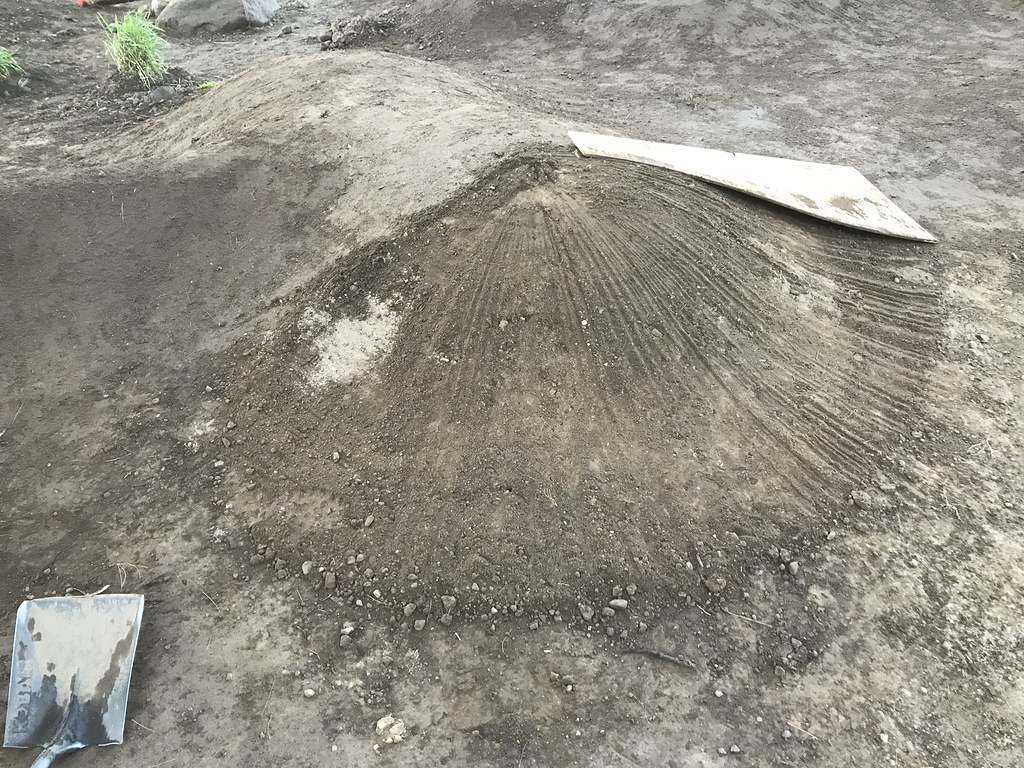Recently failing with this because the rollers were too steep and abrupt, not flowy, the next logical limit is to consider pedal strikes as an option for roller peaks. A 100% strike-free roller isn’t possible because once you start to angle the bike from vertical/upright the pedal can strike the roller, especially if pedals are down. Regardless, these methods will get you close to (upright) strike-free.
There are more than a few ways to do determine the arc of the peak to make a roller strike-free. Parabolas and circles come to mind.
Using Parabolas to Get Strike Free Rollers
Beyond this^ of course is the easy way: build a roller, get a bike, and roll it with a crank/pedal down. Of course most of the time pedals are not down when pumping over rollers and we aren’t likely to lean much unless entering or exiting berms
chord/segment method
I like this circle or chord/segment method better.
After riding these round rollers I have to say that although they are nice and smooth they do seem a little slower than the more peaky outcome shaping by eye that I got before I used a wood form. I feel like these strike-free rollers take more out of me or I’m out of breath faster. Not that this is evidence for being worse. How much slower are they, if at all? I don’t know. I do know I seem to get tired faster.
My next goal will be to meet in the middle of strike-free and a Brachistochrone companion roller, maybe an actual Brachistochrone curve that starts to roll on top around 60 degrees.
One thing this excise taught me is that I will certainly settle with the trouble of making wooden forms as they provide consistent rhythm and faster shaping.
companion roller




